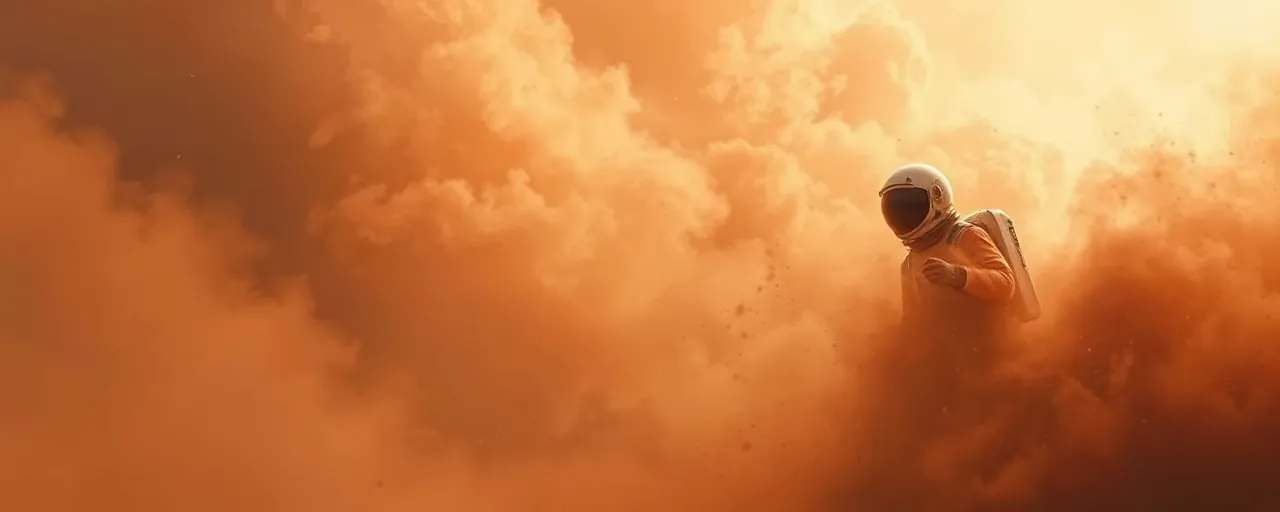A Harsh Proving Ground
Four years after NASA’s Perseverance rover touched down on Mars, a quiet experiment is unfolding on its dusty surface. Tucked onto a calibration target for one of the rover’s instruments, five small swatches of spacesuit materials have been weathering the Red Planet’s brutal conditions. Scientists are now digging into how these samples, exposed since 2021, are holding up against freezing temperatures, toxic dust, and relentless solar radiation. The findings could shape the gear that future astronauts wear when they take their first steps on Mars.
This isn’t just about curiosity. With human missions to Mars on the horizon, understanding how materials endure the planet’s extremes is a practical step toward keeping explorers safe. The rover, primarily tasked with hunting for signs of ancient life, doubles as a testbed for human exploration. Those tiny fabric squares, each less than an inch wide, carry big implications for what comes next.
What’s at Stake
Mars throws a gauntlet of challenges at anything on its surface. Its thin atmosphere, mostly carbon dioxide, offers little shield from the Sun’s ultraviolet rays, which bombard the planet unchecked since it lost its magnetic field billions of years ago. Temperatures swing wildly, from scorching days to nights that plunge below minus 80°F. Then there’s the dust, fine and clingy, laced with perchlorates, corrosive salts that could harm both equipment and human lungs. These conditions don’t just test materials; they break them down.
The swatches on Perseverance include a slice of polycarbonate visor, Vectran for glove palms, two types of nonstick Teflon, and Ortho-Fabric, a layered material blending Nomex, Gore-Tex, and Kevlar. Each was chosen for its role in current spacesuit designs, prized for toughness, flexibility, or dust resistance. Early data shows Vectran started fraying fast, with half the observed wear happening in the rover’s first 200 days. That rapid change has researchers racing to figure out why, and what it means for an astronaut’s safety.
Radiation’s Relentless Toll
Radiation stands out as Mars’ silent menace. On Earth, a magnetic field deflects much of the Sun’s energy, but Mars has no such buffer. Ultraviolet light and cosmic rays hit hard, turning sturdy plastics brittle and yellowing fabrics over time. Joby Razzell Hollis, a materials scientist who worked on Perseverance’s SHERLOC instrument, compares it to lawn chairs left too long in the sun, only worse. On Mars, the process accelerates, and an astronaut’s shoulders might take a bigger hit than their hands, depending on exposure.
Historical tests on the International Space Station and in Earth-based labs back this up, showing some materials lose up to 75% of their strength under prolonged radiation. Newer ideas, like layering suits with reflective coatings or 3D-printed hydrogels, aim to counter this. Still, the real-world data from Mars offers a rare chance to see how these theories hold up outside a simulator.
Designing for the Future
At NASA’s Johnson Space Center, researchers like Marc Fries are piecing together the puzzle. They’re planning to mimic Mars’ conditions in special chambers, blasting duplicate samples with UV light and carbon dioxide to match what Perseverance sees. By stretching and stressing these materials, they’ll measure how much flexibility and strength fade over time. A suit that frays or leaks air isn’t just inconvenient; it’s a life-or-death flaw on a planet where the air pressure would make unprotected blood boil in seconds.
Beyond NASA, companies like Axiom Space are in the game, crafting suits with dust-repelling layers and better joints for the Artemis lunar missions, which could evolve for Mars. Advocates for advanced exploration argue these innovations need to tackle the planet’s toxic dust storms too, which once coated Apollo gear in grit. Balancing durability with mobility remains the trick, especially for astronauts who might work long hours on the surface.
Lessons From the Red Dust
The Perseverance experiment ties into a broader push to make Mars livable. Its SHERLOC tool, which scans the swatches, also hunts for organic clues in Martian rocks, linking the search for life with human survival. What scientists learn about material wear could dovetail with habitat designs using regolith for radiation shielding or oxygen-extracting tech like MOXIE. Every detail matters when a single tear could spell disaster.
Looking back, the Viking missions of the 1970s scratched the surface of Mars’ mysteries, but today’s efforts go deeper. The data rolling in now isn’t just about fabric swatches; it’s about building a bridge to a future where humans can stand on that red soil and breathe easy, or at least as easy as a spacesuit allows.
